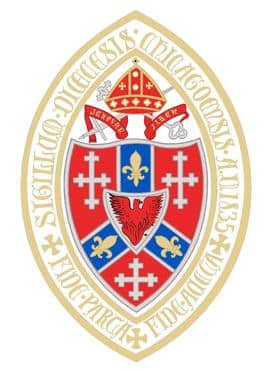Anglican Watch has been watching the Diocese of Chicago and its worsening financial situation closely for some time. We are deeply concerned about the diocese’s long-term viability and believe immediate and drastic action is needed. Indeed, this is the official alarm bell. It’s all hands to battle stations to prevent the ship from going down.
Background
For the last several years, the diocese has been using funds held by the bishop to offset significant budget deficits. In 2022, 26 percent of the diocese’s $5,119,739 annual budget came from these funds.
In drawing on these funds, the diocese has been drawing down principal. As a result, the diocese predicts the bishop’s funds will be exhausted by 2025.
Meanwhile, it’s business as usual for the diocese. There are some efforts to grow the relatively meager endowment, valued at a little over $4 million.
The diocese also has created an endowment to fund the episcopacy itself. That fund contributes roughly $106,000 to offset the direct costs of the bishop.
The budget also reflects the extended disability leave of bishop Paula Clark, who was out for almost two years due to health issues. Many budget decisions during that interim period reflect a desire to maintain a steady state for Clark and allow her to discern a path forward once consecrated.
In other words, the diocese has been kicking the can down the road on many issues.
Challenges
The diocese has numerous challenges as it struggles to get its financial house in order.
- We see hints that the diocese has been living beyond its means for some time now. For example, in the 2022 narrative budget, we learn that the diocesan trustees typically try to give 10 percent of the sale of diocesan real estate to support the operating budget. That is a mistake; all sale proceeds should go directly to the endowment.
- The diocese has not adequately accounted for inflation, which will erode income while increasing expenses.
- The potential sale of the Huron Street building is unlikely to be the financial savior contemplated by the diocese. Annual operating expenses total about $500,000 for the property. But it shares HVAC systems with the cathedral, provides meeting space, contains vesting and sacristy rooms, and provides accessibility, including elevators. When we factor in the cost of addressing these and related issues, the diocese will have relatively little to invest.
- The diocese needs to show it can cover its operating costs with or without the Huron Street property. As things stand, investors know the diocese is living on borrowed time, so they can afford to wait. So, to avoid fire sale pricing, drastic cuts need to be made in the diocesan budget immediately.
- We see no effort by the diocese to set aside management and other reserves for a rainy day. Yes, the diocese is fundraising to build its endowments, but that’s not the same as saving.
- The diocese does not have the Average Sunday Attendance (ASA) to support a $5 million annual budget. Roughly 5,240 persons attend church on an average Sunday. That means the diocese spends over $973 annually for every active member. That’s less than half the ASA of the diocese of Virginia (DioVA), which has s similarly sized budget.
- We see accelerating rates of decline in all dioceses. Some, like DioVA, see a temporary uptick in revenue as they shake down the parishes for increased giving. But parishioners in Chicago tell us that they see little value in the diocese. This perception is consistent across the denomination. Thus, there is a structural, organizational issue that is eroding income.
- Particularly worrisome is that the current budget reflects a 26 percent deficit even though it is enjoying additional annual revenue from the Idwal Hughes Trust of about $250,00 through 2027. Income from the trust stops in 2027.
Bottom line
The bottom line is this: When compared with peers, the diocese of Chicago’s annual budget should be about $3.7 million. Also, the diocese should direct about $500,000 of its annual income to rebuild management reserves. These funds allow the diocese to respond to disasters, unanticipated expenses, and more.
The diocese also needs to take a holistic approach to the issue. Despite dismal ASA, we see a diocese doing very little to pull in new members. Without people in the pews, passionate about the gospels, the diocese stands little chance of long-term survival.


Living above its means? In the Episcopal Church?
Imagine that.